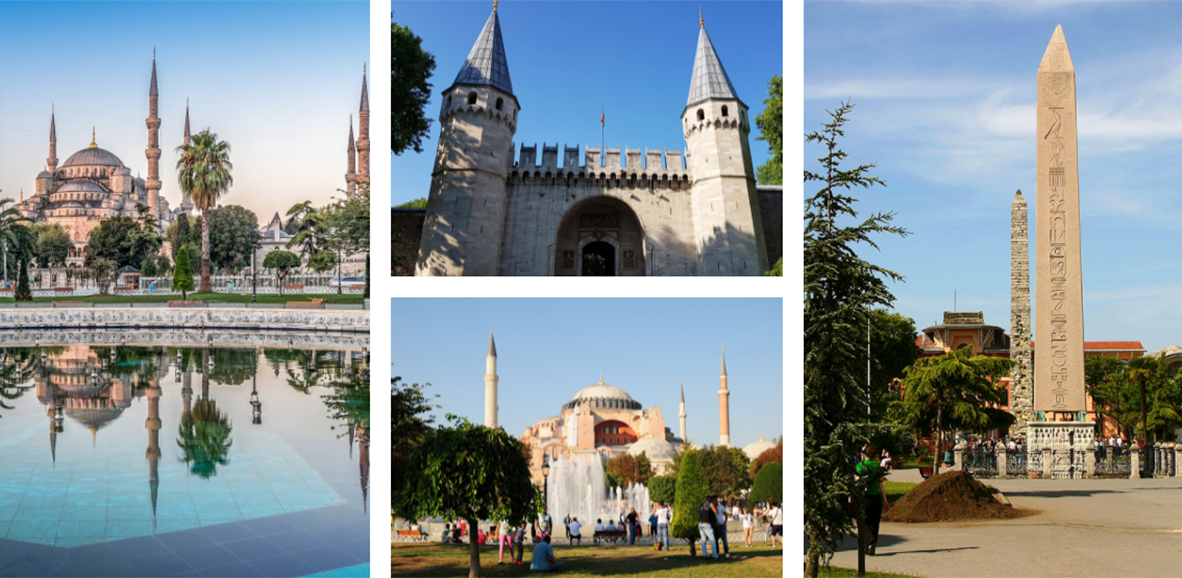Until the middle of the 19th century, Topkapi Palace served as the Ottoman sultans’ and their court’s home. Sultan Mehmed II, the conqueror of Constantinople, built the palace between 1460 and 1478 and added to it numerous times throughout its long history. The palace was not only a residence for Ottoman rulers, but also an administrative center that included administrative offices and many courtyards.
However, in the early 1850s it was decided that the palace did not match the requirements of the 19th century, and it was moved to Dolmabahce Palace. The sultanate treasury, Holy Relics, and imperial archives are preserved here. On April 3, 1924, the Topkapi Palace became a museum after the Ottoman Empire collapsed.
The Topkapi Palace Museum and Courtyards, which was turned into a museum in 1924, is the first of its kind in Turkey’s history. The Topkapi Palace Museum and Courtyards is one of the world’s largest palace museums due to the architectural structures, collections, and nearly 300 thousand archival papers from the Ottomans.
The Topkapi Museum has ten distinct major collections containing tens of thousands of pieces, including the Holy Relics. European, Chinese, Japanese, and Istanbul Porcelains and Glasses, as well as Copper and Tombak Kitchenware are among the other exhibits on display. The Imperial Treasure includes a Spoonmaker’s Diamond spoon from 1765 that is worth seeing. The museum also features paintings from Topkapi Palace.
Holy Relics Section: The invasion of Egypt by Yavuz Sultan Selim is a prominent historical period such as the transition of the caliphate to Ottoman sultans. Following this event, Mutawakkil The Third, The Abbasid Caliph handed over the holy relics of Prophet Muhammad, known as the caliphate manifestation, including the Cardigan (Hirka-i Saadet), to Ottomans. In later eras, all of these relics and other precious things were brought and stored in this Holy Relics Section.
Harem Section: The word “harem” implies “protected.” It is the remote area of the palace where sultans and their families resided. This section, which was constructed in the second courtyard and in the back gardens, is separated from the rest of the palace and well hidden. This entrance is known as “Topkapi Palace Gate of Felicity (Babüsselam)”. More than three hundred rooms, nine baths, two mosques, a hospital, numerous wards and laundry services are included in the harem section. The following sections may be visited: Karaağalar Taşlığı, Bondwoman Corridor, Sultan’s Feast Table, Has Oda of Sultan Murad The Third, Crown Prince Room, Masjid of Harem, Gözdeler Taşlığı.
It is strictly prohibited to capture images inside the palace and to use a baby stroller when visiting. You must be dressed correctly for a holy place at the entrance to the Holy Relics Division. The nursing room in the Harem exit of the third courtyard – Enderun Courtyard of the museum is available. An audio guide can be hired within the museum.
The entrance fee for Topkapi Palace is 200 Turkish Lira per person until April 2022. This covers a visit to Hagia Irini Church in the courtyard too. There is an additional 100 Turkish Lira per person if you would like to visit the Harem Section.



Comment (0)